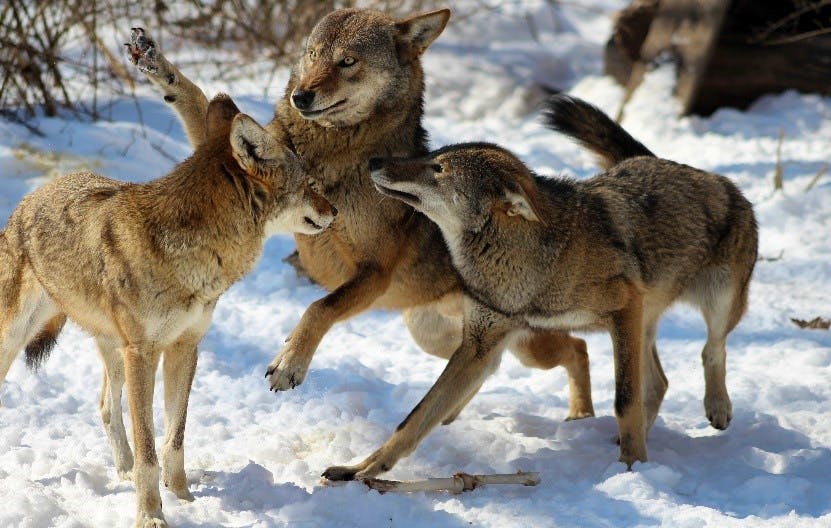The story of wolves in North America parallels the story of colonization. Early settlers coming to North America introduced aggressive predator control campaigns as they pushed westward, passing the first documented wolf bounty in 1630. By the mid-1930s, wolves were eliminated from all but a few small pockets in the lower 48 states –a fraction of their historic range.
But a change is happening in forests across the West. For the first time in decades, and in some places even centuries, wolves are finally coming home. Key protections afforded by laws like the Endangered Species Act have helped keep these wolves from slipping away altogether and dedicated conservationists are working to reintroduce wolves to the lands they once roamed freely. It’s taken a long time to get this far – however, if some have their way, the story of the wolf’s recovery will be over before it truly begins. This Wolf Awareness Week, we are reflecting on wolves’ long journey back from the brink of extinction – and what it will take to keep them from disappearing again.
For decades, Defenders has been leading the charge on human-wildlife coexistence efforts. We’ve improved relationships between wolves and landowners, communities, officials and policymakers at every level to help clear a path toward recovery. And these tireless efforts are paying off: We’re seeing wolves return to areas where they were once completely extinguished, including states like Oregon, Washington, California, Arizona, New Mexico and more.
The progress made in the 25 years since gray wolves were reintroduced to Yellowstone is inspiring, but it’s also in jeopardy. Just as these wolves are starting to expand their range into neighboring states, anti-wolf smear campaigns and rhetoric have succeeded in getting some populations of wolves prematurely stripped of their Endangered Species Act protections, and their future is uncertain. Entire packs have been killed: Defenders is calling public land agencies such as the Forest Service to take responsibility for these high conflict areas and work with the states to come up with management plans that provide meaningful protections wolves.
In the Southwest, Mexican gray wolves once numbered in the thousands, but by the mid-1970s they were wiped out, with a just handful remaining in captivity. In 1998, the U.S. Fish and Wildlife Service, led by Jamie Rappaport Clark (now president of Defenders of Wildlife), released 11 Mexican gray wolves back into the wilds of Arizona. Recovery is ongoing, but slow: Since being reintroduced over two decades ago, the Mexican gray wolf is still one of the rarest mammals in North America, with only around 130 wolves surviving in the wild. Since the initial reintroduction, Defenders has worked side-by-side with wolf country ranchers and wildlife managers to help reduce conflicts between wolves and livestock, and to develop more effective ways to address losses when they do occur.
No wolf is more critically imperiled than the Red Wolf. Once ranging as far west as Texas and south as Florida, they’ve lost 99.7% of their original territory. An intense recovery program helped restore the wild population to as many as 150– but that success story was cut short when a small number of local landowners took notice and turned the North Carolina Wildlife Resources Commission against Red Wolves. Since then, the Fish and Wildlife Service has all but abandoned the effort to save this species. Fewer than 25 Red Wolves remain in the wild, but Defenders has not given up.
Wolves face an uphill battle to recovery across the country. A small but vocal anti-wolf minority is working every day to undermine protections that wolves desperately need to recover. If they succeed, decades of hard-won progress could be lost, and ecosystems across the country could suffer.
That’s why it’s so critical to raise awareness about the challenges these wolves face – and to showcase how people and wolves can live together without conflict. Defenders is determined to help communities live alongside wolves and to finally end the misconceptions that threaten to drive these predators back to the brink of extinction. With the help of our dedicated supporters, our experts will keep fighting until these wolves are finally guaranteed a future.
Join us in celebrating Wolf Awareness Week, as we recognize the triumphant strides made toward wolf recovery across the country and renew our dedication to the wolves out there who need us by their side.










